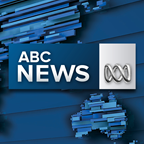
Updated
The global race is on to find the best way to track where our food is coming from as consumers become more aware of what they are eating and technology makes it easier to follow supply chains.
Key points:
- Blockchain technology makes information about food supply chains available to the public
- It also informs customers of the sustainability of produce
- The technology is currently being used to ensure Aussie beef being sold in China matches the label
Australia is at the front of the pack, with two locally developed blockchain projects rolled out this week.
Chef Matt Moran is excited by the new technology, serving blockchain-tracked Patagonian toothfish at his Sydney restaurant Aria for the first time.
He said knowing exactly where his produce comes from is paramount.
"With this, the traceability is 100 per cent," he explained.
"It's starting with the Glacier 51 toothfish, but I'd love to see it with everything. Blackmore wagyu or Moran's lamb; anything like that. I think it's really important and it's a great step forward."
The fish was caught in sub-Antarctic waters near Heard Island, more than 4,000 kilometres south west of Perth, where it was tagged with a unique radio frequency ID.
Environmental group WWF and technology investment partner BCG Digital Ventures developed the data labelling system.
WWF Australia CEO Dermot O'Gorman said consumers are placing an increased importance on where their food is coming from.
"What we need to be able to do is increase the transparency and accountability, so consumers feel very confident that the product they buy is the one that it says on the label," he told ABC News.
Austral Fisheries caught the fish, inserted the tag at the catch site and processed it in Perth into fillets.
From there, the data from the tag is transferred to a QR code on the fillet packaging, which travels with the fish before it is printed on the menu for diners to scan as they tuck into their meal.
Potential room for error
It sounds good in theory, but human intervention is required along the chain to help put the technology in place.
Austral Fisheries CEO David Carter said he is confident the correct data will be linked to each fish.
"We have two independent observers on board [each vessel] so it's not just our word for it," he explained.
"There's really no incentive for us to misrepresent tagged fish."
BCG Digital Ventures head of Asia, Paul Hunyor, said the technology makes information about the sustainability of the fish much clearer to the public.
"If we compare it to what we have right now, there's fake foods, fake labels, and a lot of complexity about whether the foods you're eating are safe and are they truly what it says on the label," he said.
"For the first time this draws a link between the label and the data points that are securely stored in a blockchain."
He said there is no economic reason for the chain to be tampered with at any step of the journey.
Once the data is stored in the blockchain, it is very difficult to alter because all the parties need to agree to make any changes.
The final step in the journey is of course at the restaurant table.
Diners can use their smart phone to scan the code, which then brings up information about exactly where and when the fish was caught, the duration of its journey to the plate — and even the name of the captain of the ship.
Protecting Australian beef
Blockchain technology is also being used to ensure Australian beef being sold in China matches the label.
PwC research reveals about $2 billion worth of meat is fraudulently sold as Australian beef every year.
That led developer BeefLedger to work with co-operative research centre Food Agility to send its first shipment of three tonnes of prized South Australian beef to restaurants and consumers in Beijing and Shanghai this week.
Food Agility chief executive Mike Briers said the move will help protect the reputation of Australian beef worldwide.
"BeefLedger provides a digital narrative that follows that beef right from the grower, to the feedlot, to the processor through distribution, before eventually being flown in boxes into foreign markets," Dr Briers said.
BeefLedger chief executive Warwick Powell told ABC News he hopes to expand the technology for consumers in Australia too.
The Sydney Fish Market is also looking into a range of technologies to store blockchain data including image recognition and e-nose technology that determines how fresh fish is by its smell.
"The distributed ledger technology takes the ambiguity out of it," said Erik Poole, Sydney Fish Market supply and business development manager.
"It's not 'he said, she said'. It's machine said."
Meanwhile, blockchain-tracked Patagonian toothfish will hit the global stage next week, when it will be served to leaders at the World Economic Forum in Davos.
Topics: science-and-technology, food-processing, environmentally-sustainable-business, food-and-cooking, australia
First posted









 Add Category
Add Category


